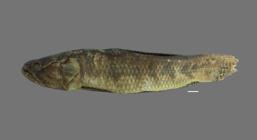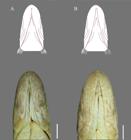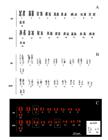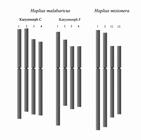Abstract
The Hoplias malabaricus group encompasses six valid species and still is believed to harbors cryptic diversity. In this work, an integrative approach including morphological, DNA barcoding, and cytogenetic considerations was conducted to characterize a population of H. malabaricus from the Amazon basin that was recently allocated in the same mitochondrial lineage with H. misionera, a species originally described from La Plata basin. The DNA barcoding analysis revealed that the Amazon population nested together with H. misionera specimens from the La Plata basin (BIN AAB1732) in the same cluster. The intragroup distance (0.5%) was 12 times lower than the nearest neighbor (6%) distance. The morphometric analysis demonstrated slightly variation between Amazon and La Plata populations, being the former composed by larger specimens. Further morphological data supported the molecular evidence of H. misionera inhabiting Amazon basin. The karyotype characterization of H. misionera in the Amazon population showed 2n=40 and karyotypic formulae 20m+20sm, that added to C-banding, Ag-NOR and 18S results are suggestive of the similarity to karyomorph C of H. malabaricus. This work reveals the first record of H. misionera outside of La Plata basin and expands the species distribution for 2500 km northward until the Marajó Island, estuary of Amazonas River.
Keywords:
Amazon basin; COI; Cryptic diversity; Karyotype; Trahira

 Thumbnail
Thumbnail
 Thumbnail
Thumbnail
 Thumbnail
Thumbnail
 Thumbnail
Thumbnail
 Thumbnail
Thumbnail
 Thumbnail
Thumbnail
 Thumbnail
Thumbnail






